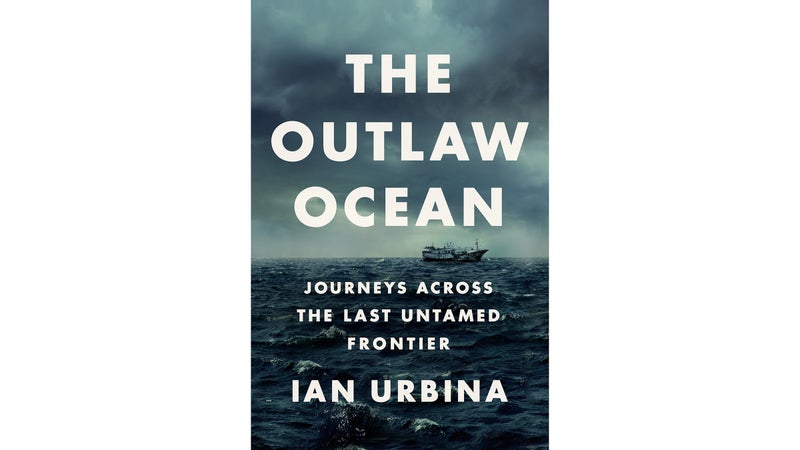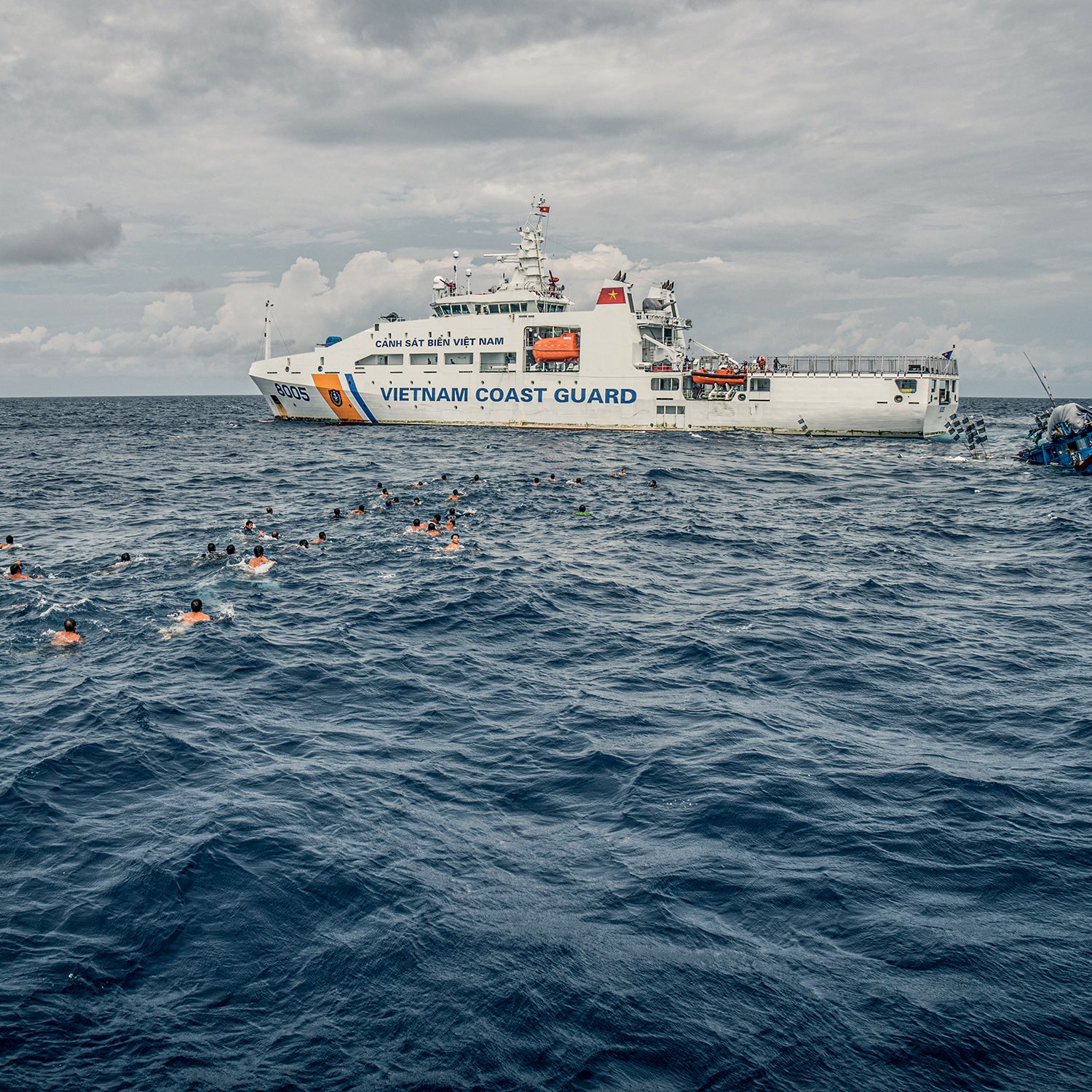Sail a boat about 12 miles from the coast of any ocean and you’ll find yourself in international waters. Out there, the laws of the modern world fall away, and more importantly, so does almost any kind of societal scrutiny. In ($30, Knopf), journalist Ian Urbina investigates the corrupt and exploitative world that exists on the high seas, which we all benefit from but rarely take time to face. “An escape for some, the ocean is a prison for others,” he writes in the introduction.
The book is structured as a series of essays on legal gray areas at sea, with examples like a ship that provides lawful abortions in international waters and the story of a man set adrift in the Atlantic . Urbina began reporting many of these chapters while working as , where he broke stories on sea slavery in Southeast Asia and cold-blooded executions of fishermen by Taiwanese rivals off the Horn of Africa. (He previously for his role in reporting on former New York governor Eliot Spitzer’s involvement in a prostitution ring.) Taken as a whole, this body of work is a devastating look at the corruption, exploitation, and trafficking that thrive on the open ocean.

While Outlaw Ocean isn’t an adventure tale, Urbina nods to the excitement of the high seas. “Full of devouring storms, doomed expeditions, shipwrecked sailors, and maniacal hunters, the canon of sea literature offered a vibrant picture of a watery wilderness and its untamed rogues,” he writes as he ponders the appeal of the ocean. Urbina himself is often in the middle of the action. At various points, he finds himself on the deck of an Indonesian anti-poaching ship as it faces off with a heavily armed Vietnamese patrol, on a Sea Shepherd Conservation Society boat in pursuit of a ship that had been poaching Patagonian toothfish (politely branded in stores as Chilean sea bass), and caught in the middle of a simmering political conflict over fishing rights in Somalia that threatens to boil over into a coup. The writing is straightforward but clever—Urbina packs sentences with a lot of information, but they never seem bloated. Atmospheric moments, like when Urbina describes the “faint gurgling” of seawater around the legs of an abandoned offshore platform, are rare but eerie and beautiful when they do appear.
Urbina’s reporting is clearly driven by a sense of responsibility to the people he meets, and the book offers a glimpse into his relationship with his subjects that isn’t visible in his newspaper articles. It’s not that he’s out to change each life he encounters—that would obviously be futile—but that he doesn’t want these stories to go untold. He tries, for example, to untangle the web that traps so many of his subjects into involuntary servitude at sea. For a few short pages, he visits a Thai karaoke bar that doubles as a “a staging ground in the human-trafficking pipeline.” There, a many-tentacled system of abuse stretches between sea and shore: young girls are pressed into prostitution, then used as a lure for boys from rural Myanmar and Cambodia—also teenagers—who will be trafficked into sea slavery. “Of all the evil things I saw while reporting… the karaoke bars were perhaps the most sinister,” he writes. In the moment, he’s paralyzed and openly uncomfortable with his journalistic remove.
The book can feel Sisyphean. No matter how relentlessly Urbina chases a scofflaw ship or an abusive captain, the sea can swallow them up.
His reporting has had some success bringing changes to this system. In the past decade, pressured by the investigations of Urbina and others, the Thai government cracked down on illegal fishing and sea slavery—which often go hand in hand. But it becomes evident that fixing the fishing industry is like squeezing a balloon: put pressure on one spot, and it bulges elsewhere. Some of the worst Thai actors switched their registrations to Djibouti, which is not subject to such close media scrutiny and has turned an apparent blind eye to the problems. When Urbina visits Somalia to observe what seemed a successful effort to tamp down piracy, he’s instead forced out of the country with threats of assassination. The local government has tacitly approved of and profited from poaching by those same Thai-owned, Djibouti-registered ships at the expense of local fishermen, and Urbina’s presence becomes a threat.
These failures can make the book feel Sisyphean. No matter how relentlessly Urbina chases a scofflaw ship or an abusive captain, the sea can swallow them up. In a moment when Brazilian fascists are burning the Amazon and of Americans are living in a state of anxiety as we anticipate a worsening climate crisis, where are we supposed to put this news of the gross realities of the ocean? Urbina doesn’t spend much time linking American consumers and the abuses he chronicles, but the connection is obvious. The ships that pack cargo across the ocean also push stowaways overboard. The shrimp that goes into cat food could well have been caught by slaves. Urbina doesn’t have an answer for how to avoid complicity in this system, but one thing is certain: abuses will keep happening as long as no one is watching.
Don’t Miss: Another Great Read About a Little-Explored Frontier
Jill Heinerth’s career as a professional cave diver, which she recounts in her memoir ($30, Ecco), began with a pair of burglaries. In the mid-eighties, on her first night attending university and living in a seedy corner of Toronto, a man with “red-rimmed and crazed” eyes broke into her student apartment and pushed his way through her bedroom door before she slashed him with an X-Acto blade. A few months later, while Heinerth was home on break, she chased a different would-be robber away with a handful of kitchen knives. The first encounter leaves her shaken, but the second makes her realize that she’s braver than she thought. The burglaries give her the courage to shed an “ill-fitting life” as a graphic designer in favor of one spent exploring some of the deepest, most dangerous water-filled caves on earth.
The rest of the book traces Heinerth’s path into full-time cave diving, from days spent beach bumming in the Caribbean to her early dives amid north Florida limestone to the loss of friend after friend deep under the surface. Along the way, she wrestles with questions of belonging and confidence in a male-dominated sport. The writing can be a little over-the-top—the line “This is awesome!” makes repeated appearances—but the worlds Heinerth conjures up are captivating: underground bivouacs, days-long journeys inside mountains, a “multicolored shag carpet” of isopods and sponges and crabs living beneath an Antarctic iceberg. Despite the tragedies she’s witnessed, it’s easy to understand why she keeps going back into the depths.


